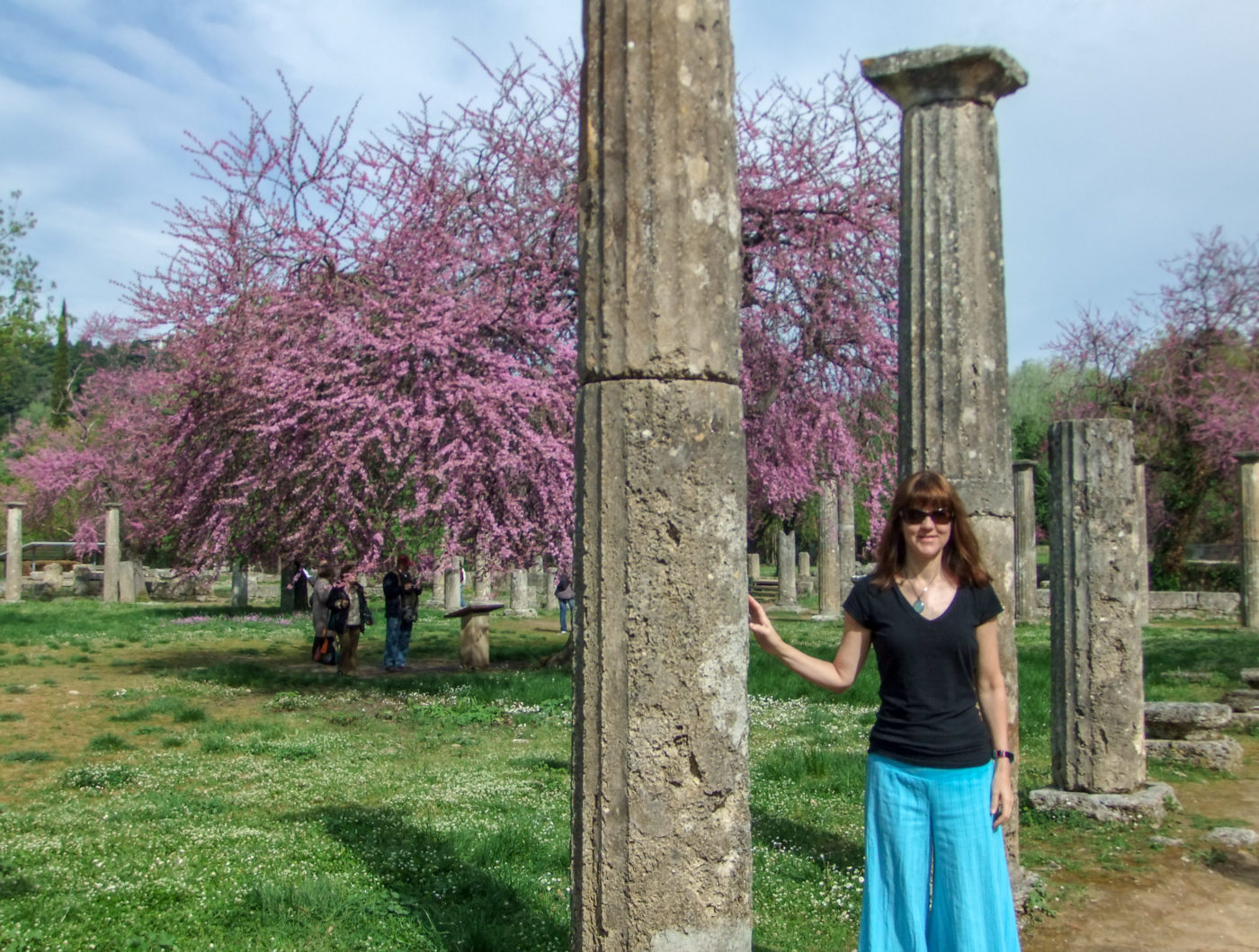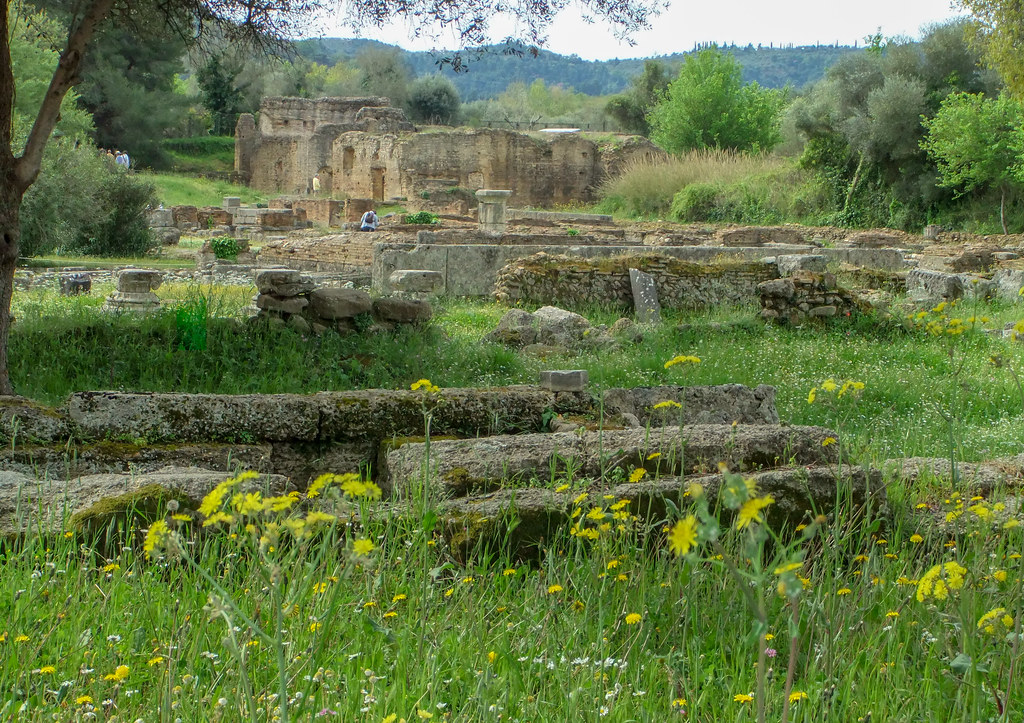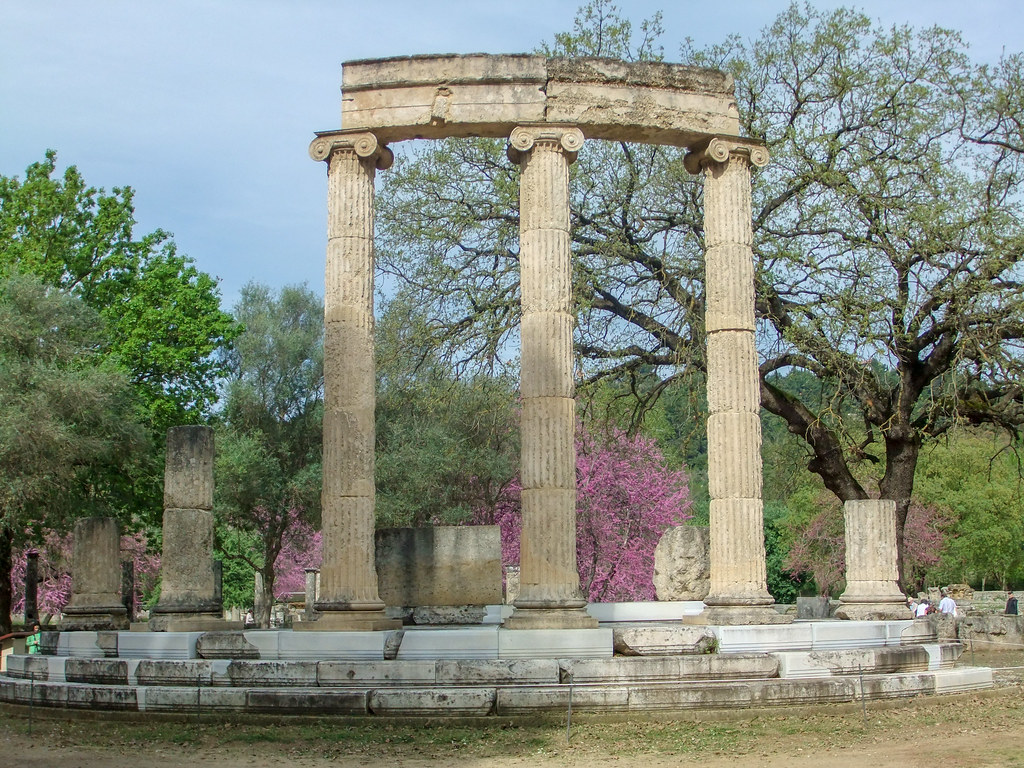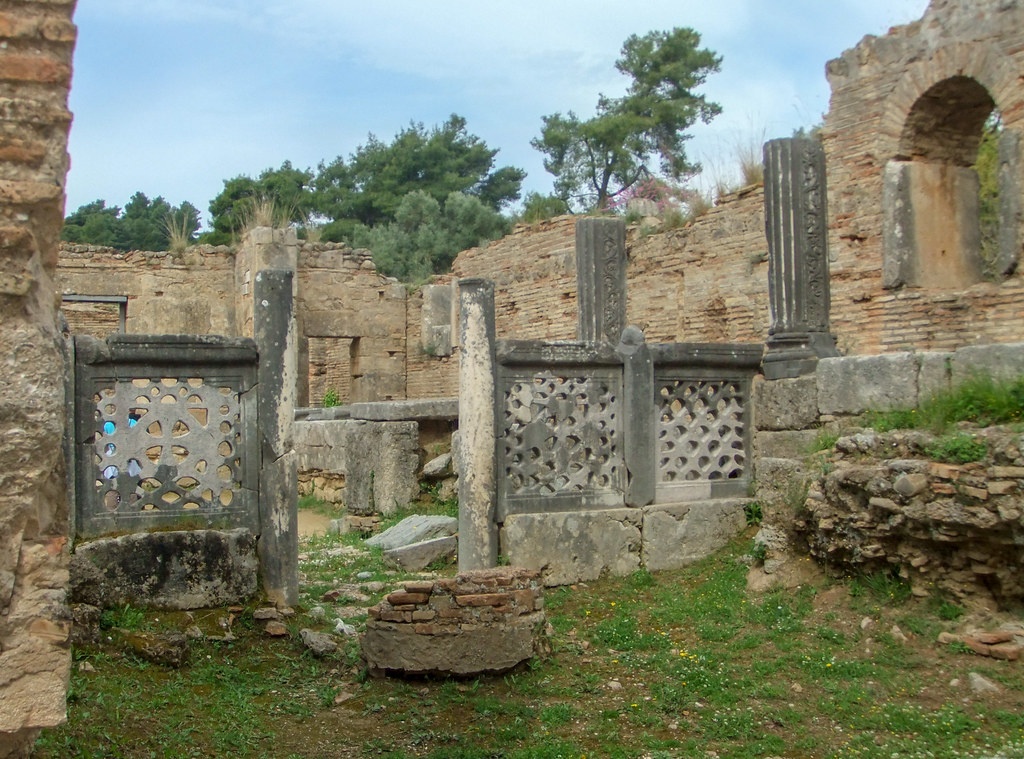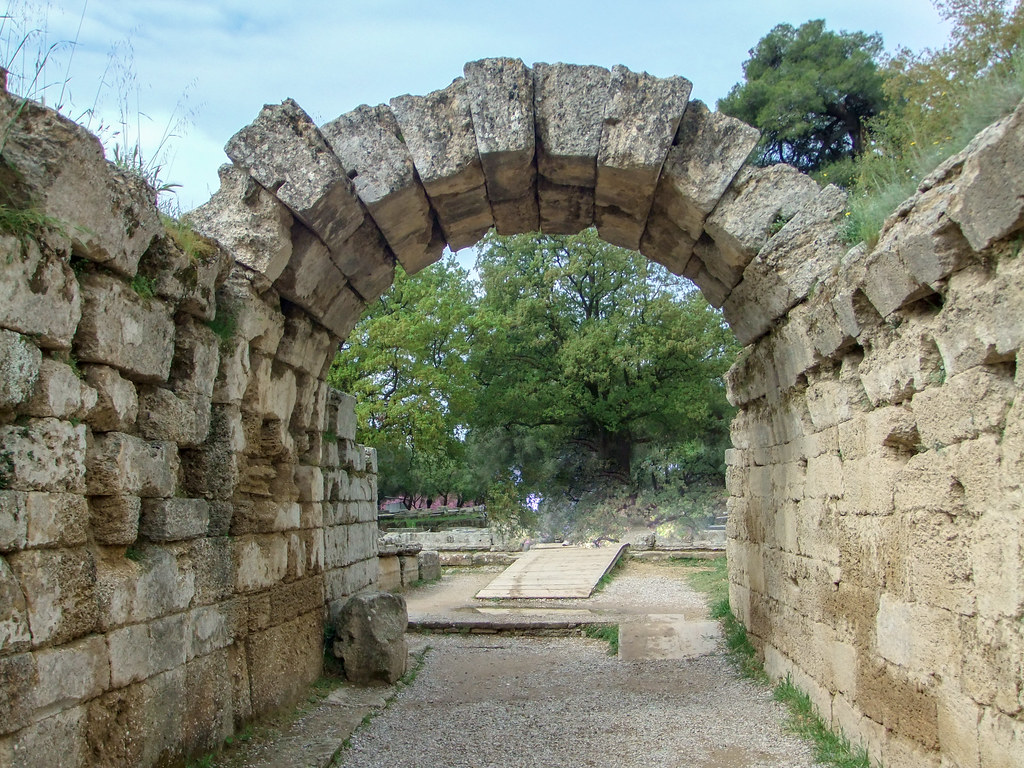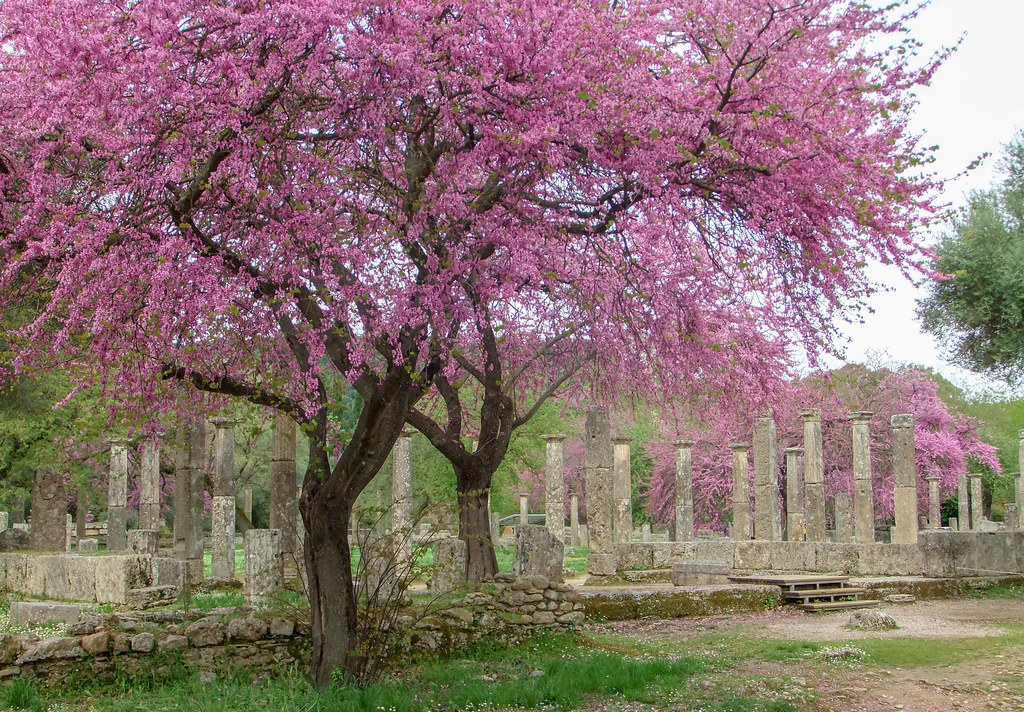Olympia is one of the most significant archeological sites in Greece. One can easily imagine the original Olympics when wandering among the columns and platforms of these ruins. There still remains enough vestiges and artifacts from the “Birthplace of the Olympics” to go back in time for perspective. A couple years ago, I spent a day wandering this marvel amongst the peak of spring bloom. So, read on to learn about the highlights and why the best time is spring for an Olympia Greece ruins tour.
Background of Olympia, Greece’s Original Olympics
Located on the Peloponnese peninsula in Greece, Olympia is where the original Olympic games played out. It lies in the Alfeios River valley, about 18 km from the Ionian Sea. The Olympic Games were held every 4 years for over 1,000 years from the 8th century BC to the 4th century AD. The games encompassed much more than sports. Moreover, they symbolized the peace and nobility of healthy competition, with just the reward of an olive wreath. 1500 years later, the first modern world Olympics began in 1896 in Greece.
Besides the Olympic games, the site also a significant Panhellenic religious sanctuary of ancient Greece. It was dedicated to Zeus, the father of the 12 Olympian Gods and his consort, Hera. Also called Altis, this was the sacred grove and sanctuary of Zeus. Furthermore, it had over 70 buildings, such as, the Temple of Zeus, Temple of Hera, Palaestra and the Philippeion. Furthermore, the great altar of Zeus is where they made the great sacrifices. There are also various sculptures, like the famous Hermes of Praxiteles and the statue of Nike of Paionios.
My Springtime Olympia Greece Ruins Tour Highlights
From the cruise port, Katakolon, I went solo on the modern train 25 miles to Olympia, arriving in 45 minutes. Then, the archeological site is walking distance from the train. I did not take a tour and just wandered the complex on a spring afternoon in April. Luckily, I arrived during one of the best times, as this is when the wildflowers and Judas trees are in full bloom. Overall, I was awestruck by the numerous purplish-mauve Judas blooming trees and yellow wildflowers, alongside the remaining stone platforms and Doric columns. In contrast, the new colors of spring illuminated the ancient sacred ruins.
I felt like taking it all in without a tour. It was such a beautiful spring day and it felt fantastic to be in such a historic place at my own pace. Overall, I wandered for at least a couple hours and took amazing photos, displaying the flowers alongside the ruins.
I walked by both the Temple for Zeus and his consort, Hera. There was just 1 remaining Doric column next to rubble alongside the Zeus Temple near Kronos hill. In comparison, the Hera temple had 3 columns still standing among a platform and stones.
The Philippeion was an Ionic circular memorial in limestone and marble. It was built as a symbol for Philip II of Macedon’s defeating the forces of Classical Greece. Furthermore, Philip built the colossal chryselephantine (ivory and gold) statue of Zeus, sculpted by Pheidias. This sculpture was named one of the Seven Wonders of the Ancient World.
There is a restored version of the workshop of Pheidias, the great sculptor that created the large chryselephantine statue of Zeus.
I walked by the open grassy field where the stadium once stood. The only vestige is the limestone archway or hall and entrance to the stadium. (Photo below)
The most Doric columns I saw were lined up where the Palaestra used to be. This site was used as as part of the gymnasium for wrestling, boxing and jumping. This is the best location for the beautiful Judas-blooming trees. (Photo below)
Olympia Museums
Archeological Museum: This is one of the best museums in Greece with findings from the ancient site and the area. It includes famous statues, such as, Nike Paionios and Hermes of Praxiteles
Museum of the History of Olympic Games: Located inside the Archeological Museum, this displays everything to do with the Olympic games and events.
Read More!
Ancient Pompeii’s Top Ten Attractions
Historic Valletta, Malta’s Top Sites to See
Overall, Olympia Greece Ruins Tour
This is one of my favorite tours exploring an archeological site. And it was being there during spring bloom that made it extra special. The symbolic juxtaposition of the old and new tells the deeper story regarding cycles of life. From ancient relics of the past, come the rebirth for creative evolution.

